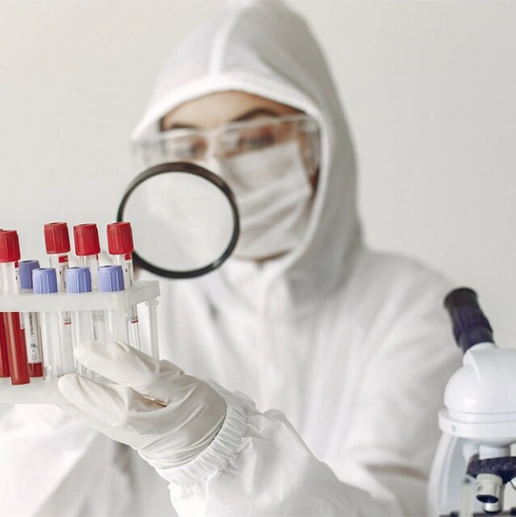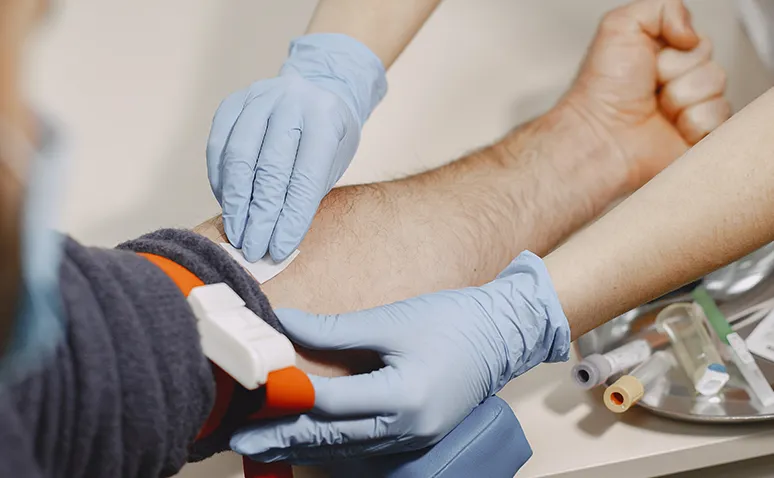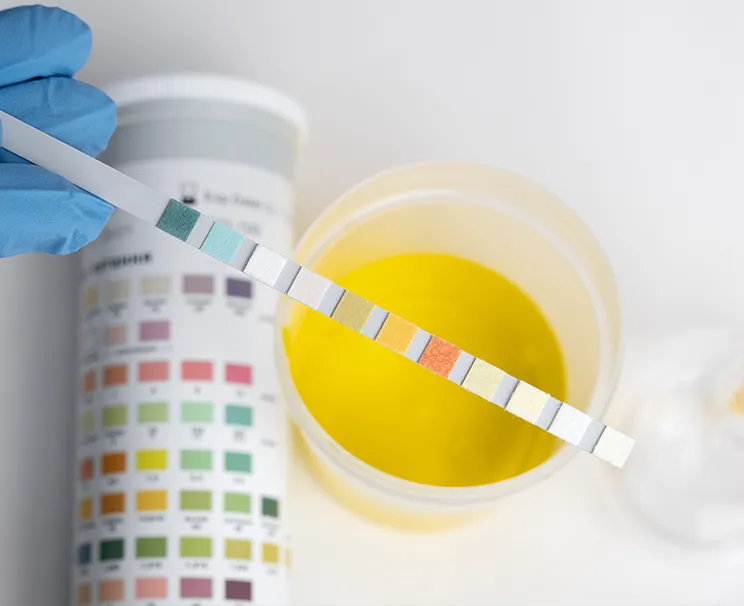What are hematology tests? They are laboratory tests used to analyze the components of blood to aid in the diagnosis of various diseases. These tests evaluate the number, shape, and function of blood cells, helping identify conditions such as anemia, infections, clotting disorders, and leukemia.
What are hematology tests? The answer to this question varies depending on the patient’s symptoms and clinical findings. For instance, a complete blood count (CBC) measures the number of red blood cells (erythrocytes), white blood cells (leukocytes), and platelets, providing general information about blood health. The hemoglobin test assesses the blood’s oxygen-carrying capacity, while the hematocrit test determines the percentage of red blood cells in the blood. Prothrombin time (PT) and activated partial thromboplastin time (aPTT) tests analyze the blood clotting process and are used to diagnose bleeding disorders. These tests enable the early diagnosis and monitoring of hematologic diseases.
What Do Hematology Tests Indicate?
Hematology tests provide healthcare professionals with important clues for diagnosing blood-related disorders. For example, the complete blood count (CBC) evaluates overall blood health, assisting doctors in detecting infections, anemia, or other hematologic disorders. The hemoglobin test, which measures the blood’s oxygen-carrying capacity, is commonly used for patients suspected of having anemia (iron deficiency). Tests that determine the white blood cell count assess the immune system’s condition and play a critical role in identifying infections or inflammatory diseases.
The most frequently used hematology tests and their meanings are as follows:

- Complete Blood Count (CBC): Measures the number of red and white blood cells as well as platelets.
- Hemoglobin (Hgb) Test: Indicates the blood’s oxygen-carrying capacity.
- Hematocrit (Hct) Test: Determines the proportion of red blood cells in the blood.
- White Blood Cell (Leukocyte) Count: Assesses the immune system and infection status.
- Platelet (Thrombocyte) Count: Helps evaluate blood clotting ability.
- Erythrocyte Sedimentation Rate (ESR): Determines whether inflammation is present in the body.
- Reticulocyte Count: Measures the bone marrow’s production of new red blood cells.
- Peripheral Blood Smear: Microscopically examines blood cell morphology.
- Prothrombin Time (PT): Analyzes the blood clotting process.
- Activated Partial Thromboplastin Time (aPTT): Evaluates the intrinsic clotting pathway.
- International Normalized Ratio (INR): Used for monitoring patients on anticoagulant therapy.
- Fibrinogen Test: Determines the amount of fibrinogen, a protein essential for blood clotting.
- D-Dimer Test: Identifies blood clotting disorders and vascular blockages.
- Iron and Ferritin Tests: Measure iron levels and aid in diagnosing anemia.
- Vitamin B12 and Folate Tests: Analyze essential vitamin levels for red blood cell production.
- Hemoglobin Electrophoresis: Detects genetic blood disorders such as sickle cell anemia and thalassemia.
- Bone Marrow Biopsy and Aspiration: Examines the production of blood cells.
Hematology tests are not only crucial for diagnosing diseases but also play a significant role in monitoring treatment progress. Regular hematology tests are especially important for individuals predisposed to blood disorders, enabling early diagnosis and effective treatment. For instance, complete blood count (CBC) tests are frequently performed on cancer patients undergoing treatment to monitor their immune system status.
Additionally, clotting tests are vital before surgical procedures and for patients using anticoagulant medications. Prothrombin time (PT) and activated partial thromboplastin time (aPTT) help determine whether the blood clots within a normal time frame, assessing the risk of excessive bleeding.

What Are the Normal Values of Hematology Tests?
Hematology tests facilitate the early detection of various blood disorders, infections, anemia, and clotting abnormalities. The complete blood count (CBC) is one of the most frequently performed tests in hematology laboratories, measuring red blood cells, white blood cells, and platelets to assess overall health.
The normal values of hematology tests in healthy individuals are as follows:
- Hemoglobin (Hgb):
- Males: 13.8–17.2 g/dL
- Females: 12.1–15.1 g/dL
- Hematocrit (Hct):
- Males: 40–50%
- Females: 35–45%
- White Blood Cell (WBC) Count: 4,000–10,000 cells/µL
- Red Blood Cell (RBC) Count:
- Males: 4.7–6.1 million cells/µL
- Females: 4.2–5.4 million cells/µL
- Platelet (PLT) Count: 150,000–450,000 cells/µL
A hemogram, which includes a complete blood count (CBC), is a detailed test that analyzes blood cell morphology and distribution. This test plays a critical role in detecting anemia, infections, or immune system disorders.
Blood cells are produced in the bone marrow and are essential for oxygen transport, immune defense, and clotting mechanisms. Therefore, regular hematology tests are vital for maintaining overall health. Any deviations from normal values should be assessed by a healthcare professional to develop an appropriate treatment plan.
What Does a Hematology Test Examine?
Hematology tests analyze the quantity, structure, and function of blood cells, aiding in the diagnosis of various diseases. Complete blood count (CBC) determines the number of red blood cells (erythrocytes), white blood cells (leukocytes), and platelets.
These tests measure hemoglobin and hematocrit levels, helping diagnose iron deficiency or anemia. Additionally, clotting disorders are evaluated through prothrombin time (PT), activated partial thromboplastin time (aPTT), and D-dimer tests. The reticulocyte count and peripheral blood smear are also essential for assessing the bone marrow’s capacity to produce blood cells.
What Are the Symptoms of Hematologic Disorders?
Hematologic disorders impact the blood’s oxygen transport, immune response, and clotting functions, leading to various symptoms. In anemia (low red blood cell count) cases, fatigue, dizziness, and paleness are common symptoms.
Shortness of breath may occur due to insufficient oxygen transport, especially during physical exertion. Frequent infections may indicate an immune system disorder, while easy bruising or prolonged bleeding may suggest low platelet levels. If any of these symptoms are observed, hematology tests should be performed to identify the underlying cause.










